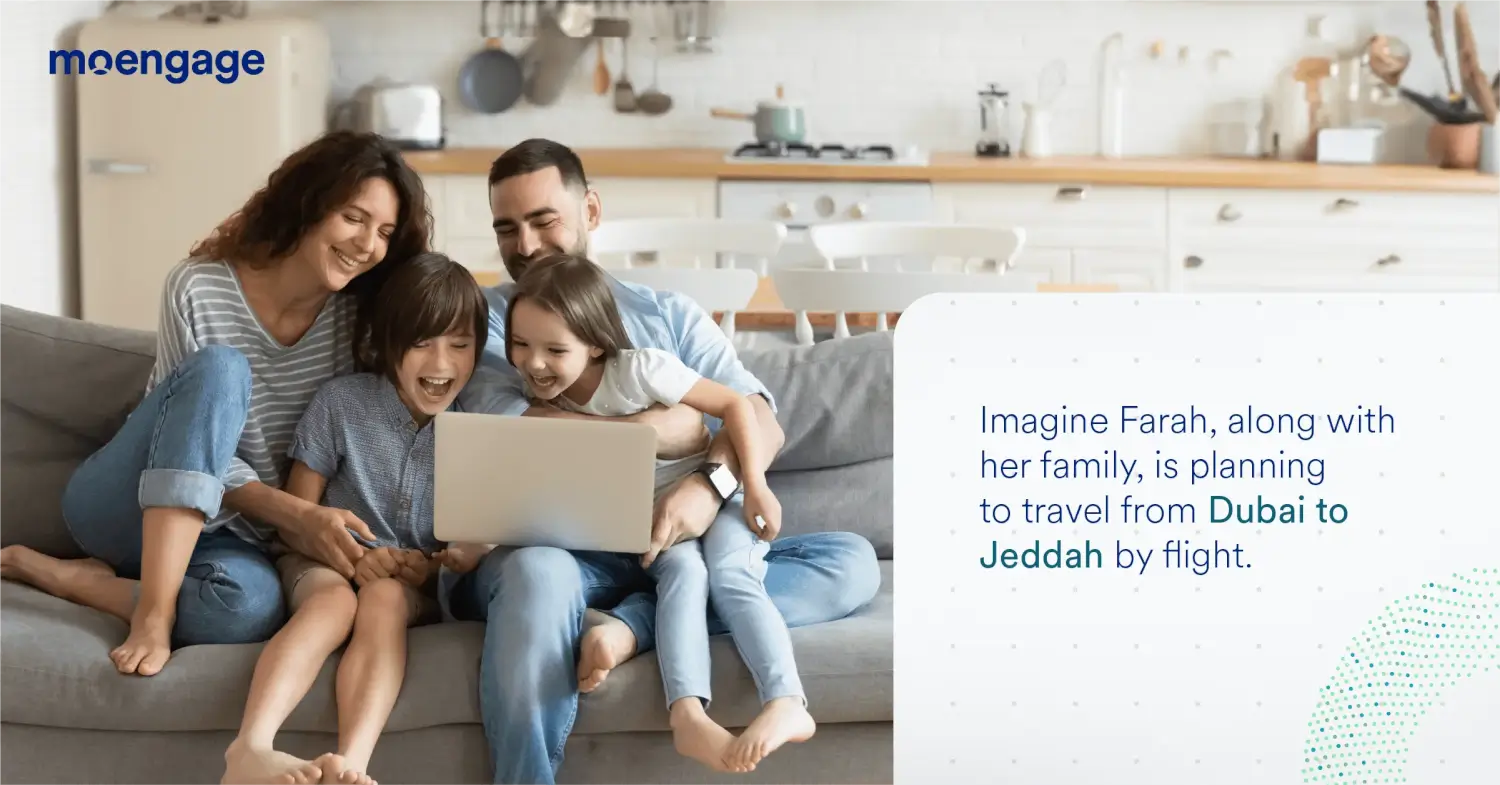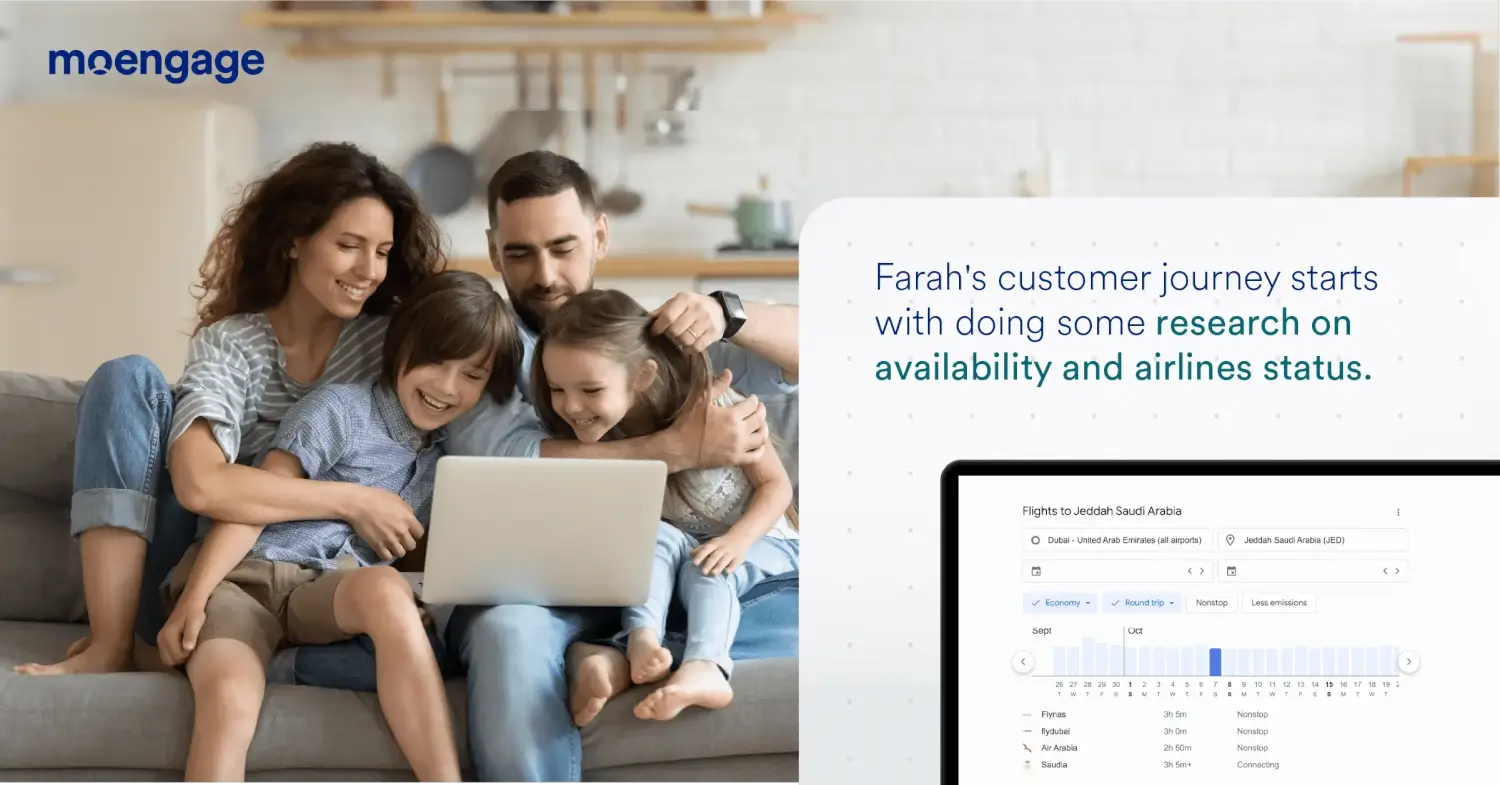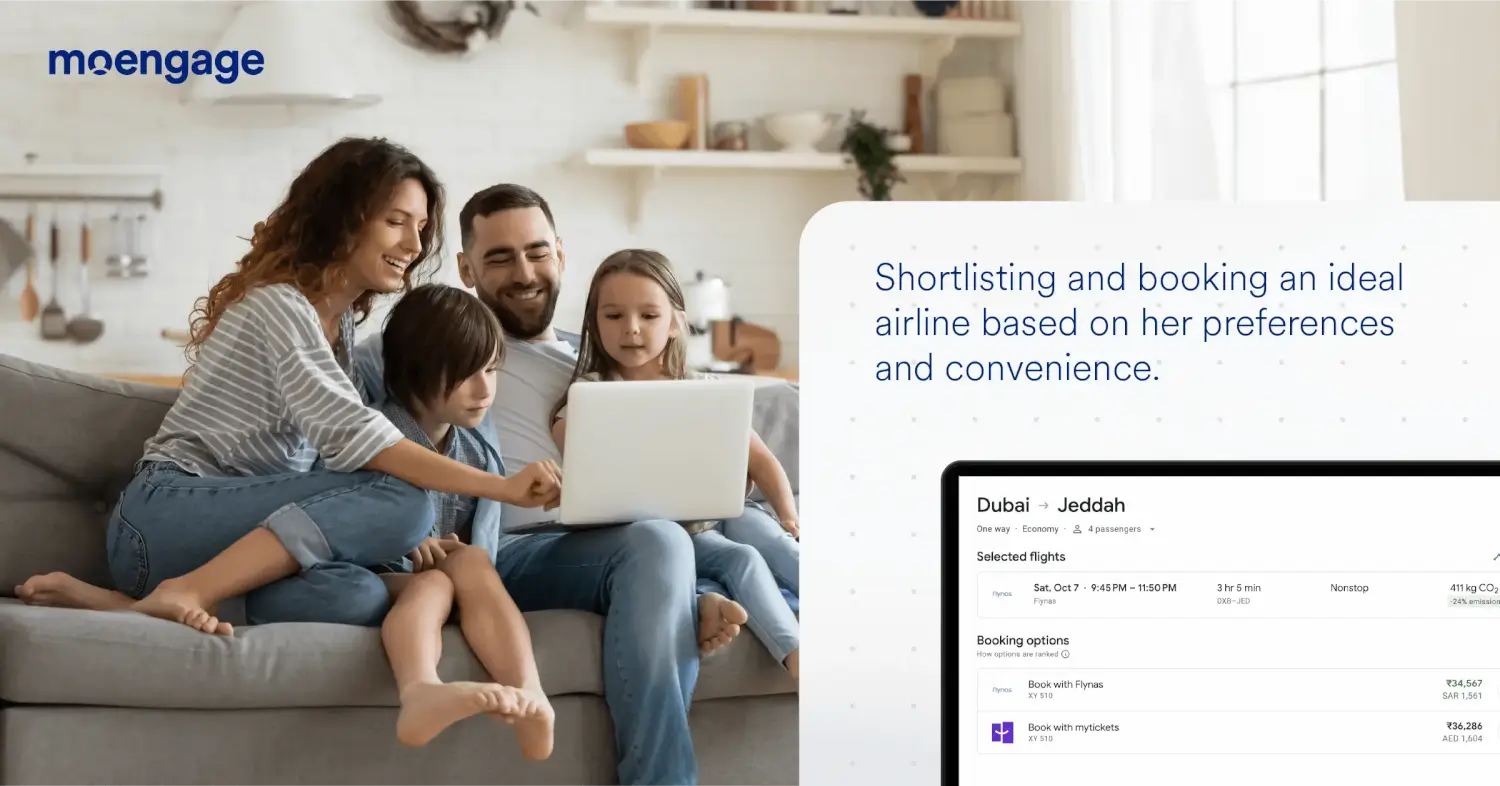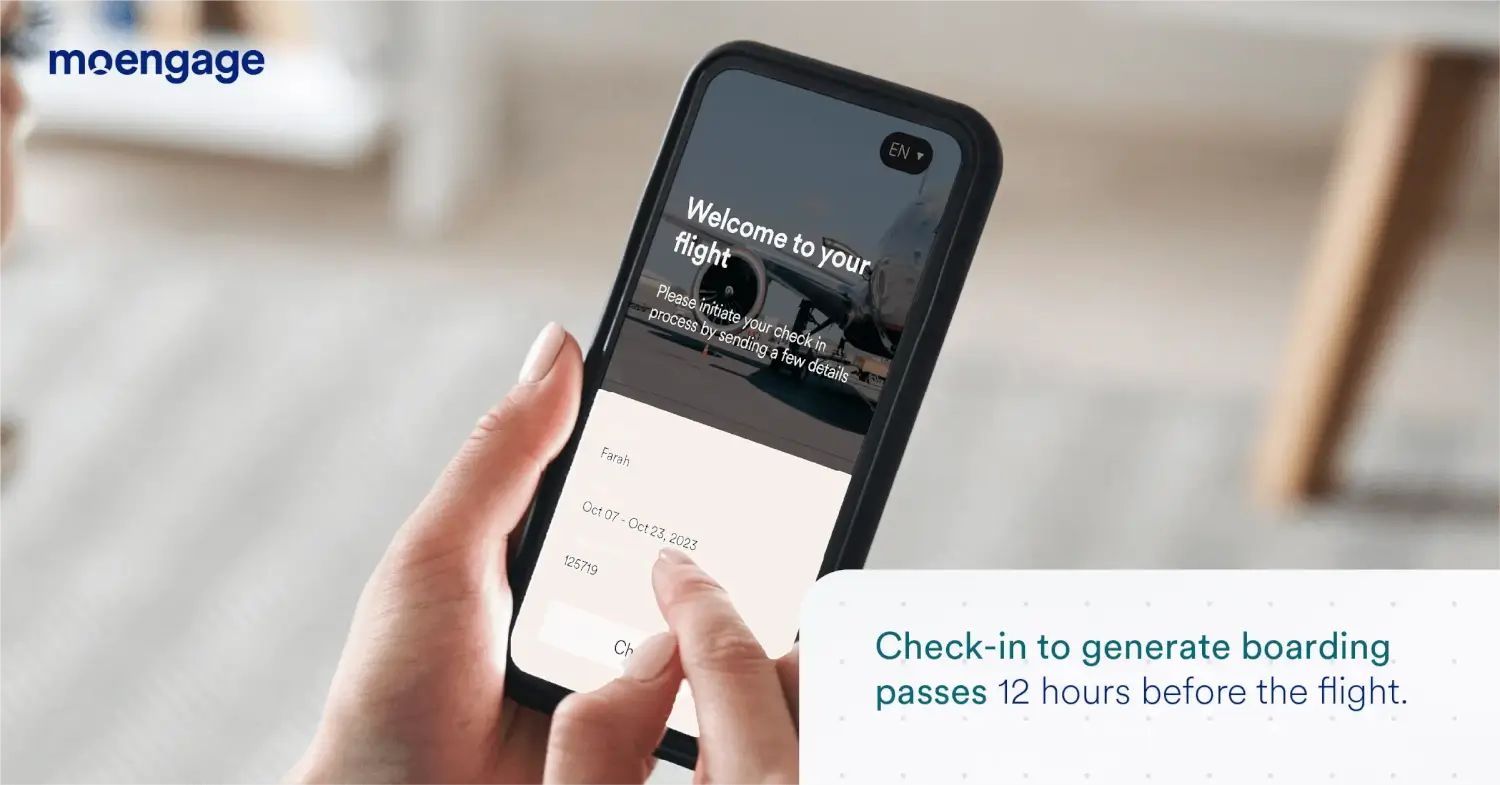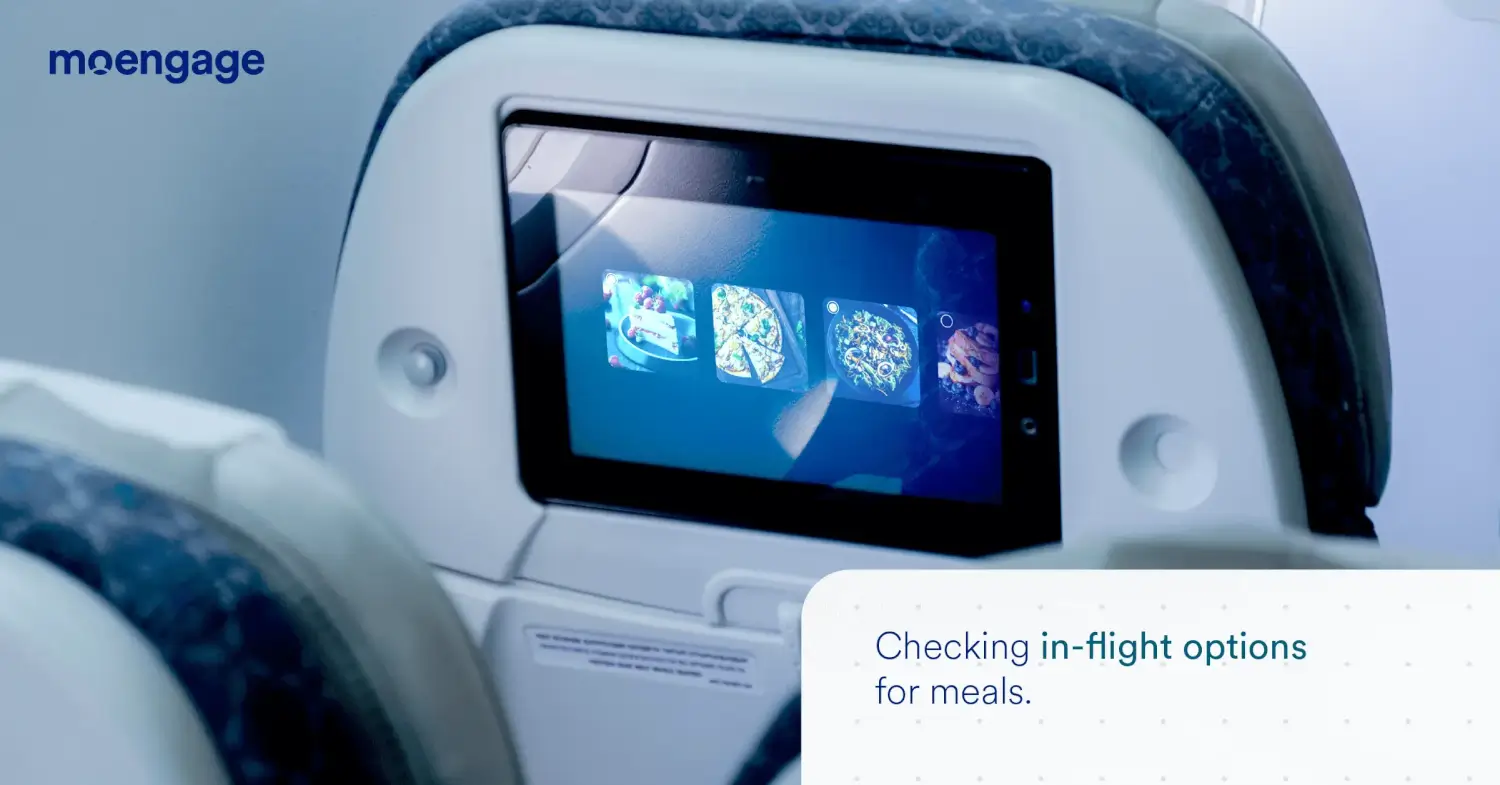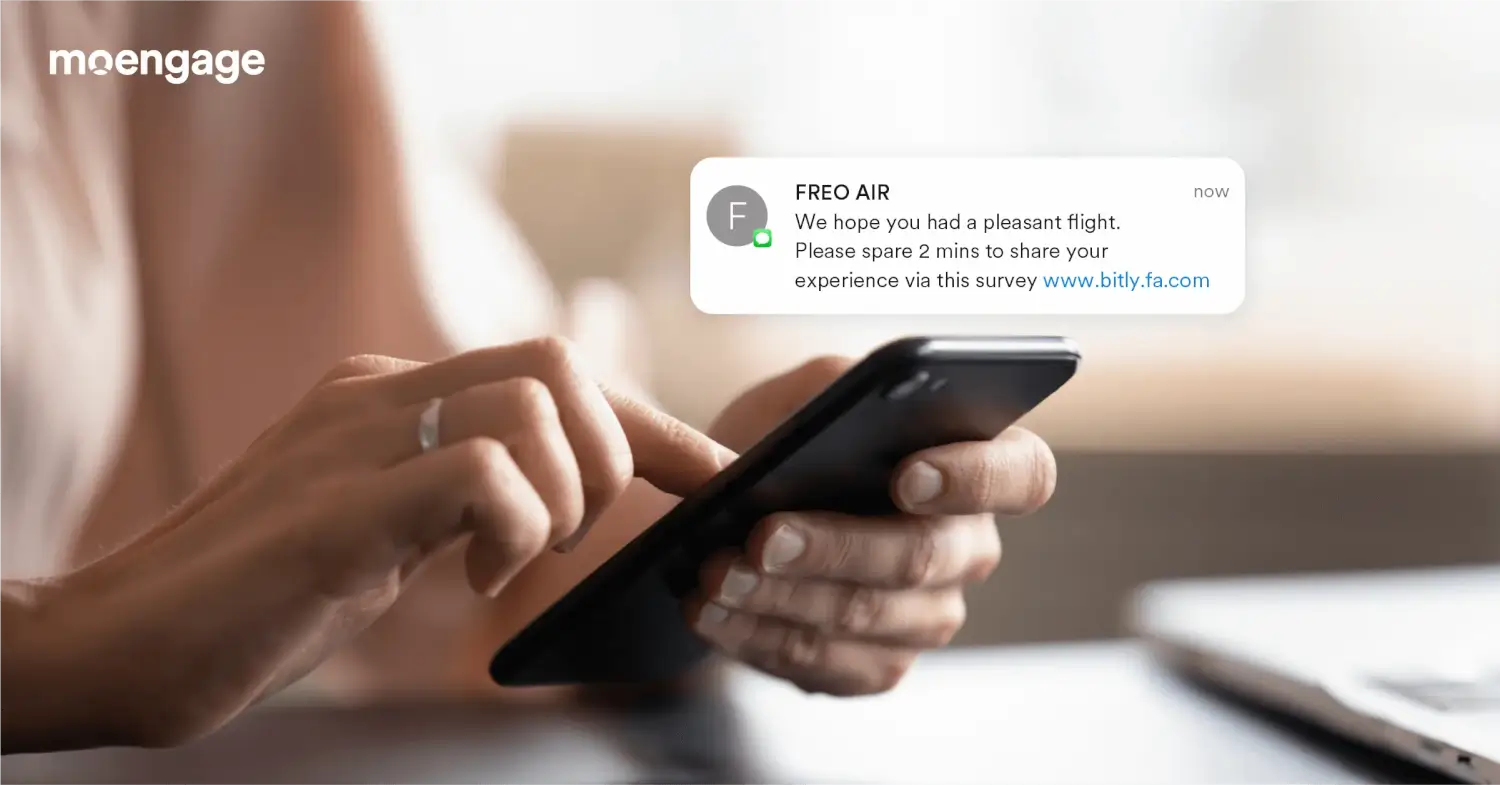7 Journey Touchpoints to Maximize Airlines Customer Experience
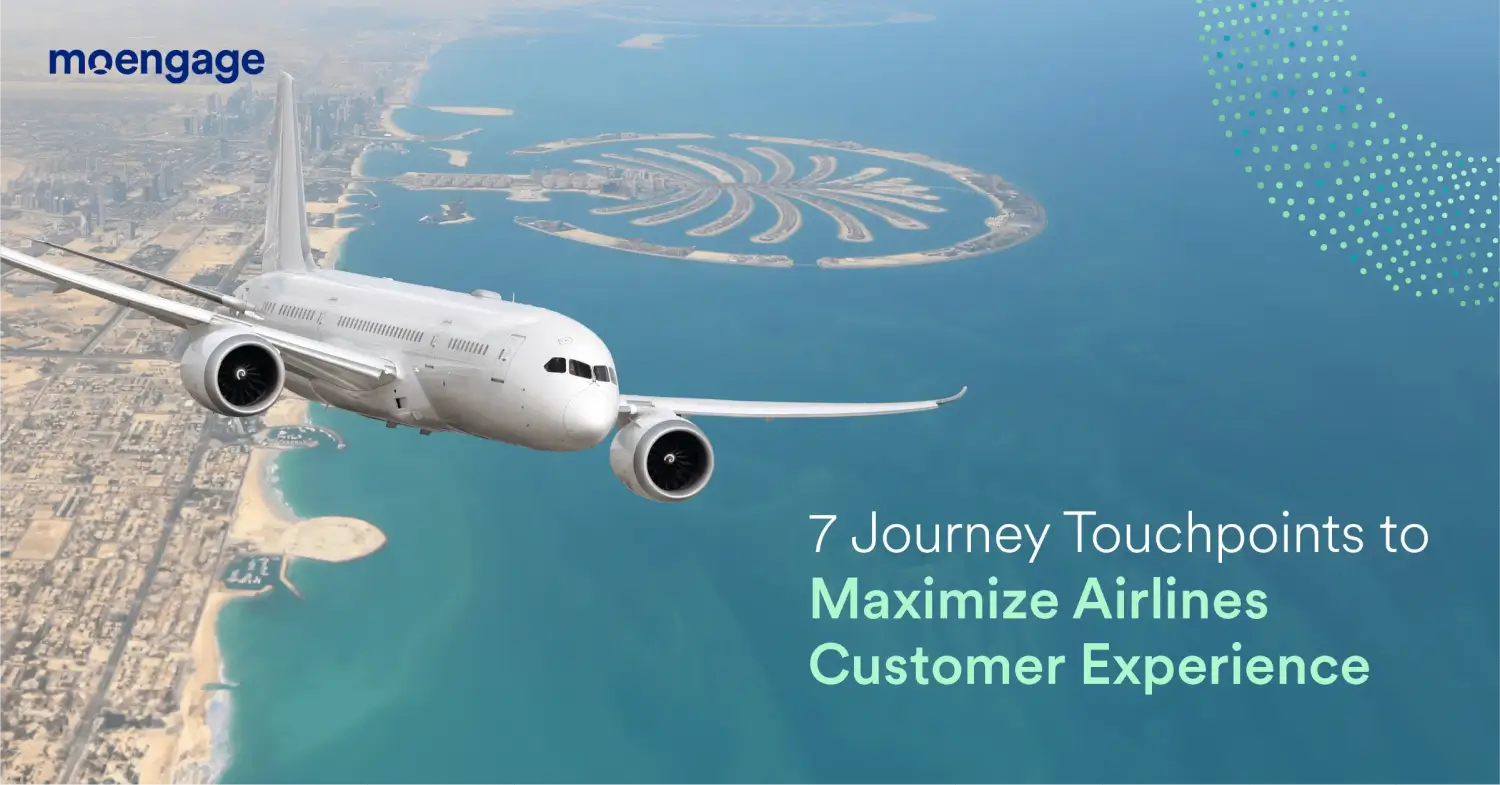
Reading Time: 9 minutes
Introduction
Back in the 60s, when the concept of Starbucks and the likes were still maturing globally, avid coffee lovers relied on drinking espressos with friends, colleagues, and families – it became a true social experience.
Fast forward to today, avid coffee lovers can be segregated into two segments (at a high level).
- Those who prefer picking up their early morning/late evening coffee from cafes like Starbucks and;
- Those who own brewing sets and prefer to make their own coffee each time.
If we talk about coffee lovers visiting various cafes, it is more about the options and a personalized experience starting from {Fname}. While for those who prefer brewing their own coffee, it’s about experiencing the whole process of preparing a coffee – starting from pouring to pressing to vacuuming.
With the above example, it is safe to assume that, today, customer experience (CX) is unique and a well-adapted term. A term that has seen evolution from a simple exchange of money for goods to building trust and loyalty.
As a matter of fact, as per a recent survey of 2000+ Middle Eastern and African customers, ~30% of customers said that relevant recommendations from brands enhance their experience. In fact, this remains a gospel for all industries, especially the airline industry in recent times.
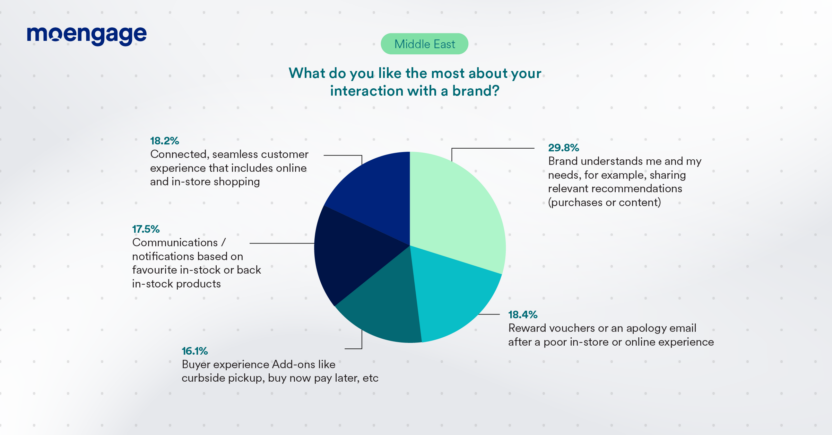
Now More than Ever: Why Customer Experience is Important in the Airline Industry
Before we talk about the what and why of customer experience (CX) from an airline customer engagement point of view, let’s look at what the average passenger experience looks like.
Farah probably had a good experience with nothing to complain about throughout her journey. However, in today’s world, a “good experience” may just not cut it.
With a plethora of domestic and international Airlines, it is important for an airline brand to stay ahead of the curve with superior customer experience (CX).
For instance, timely communications sent to Farah to keep her updated about any delays, etc., or sharing a discount coupon on kid meals, would go a long way in building trust and customer loyalty.
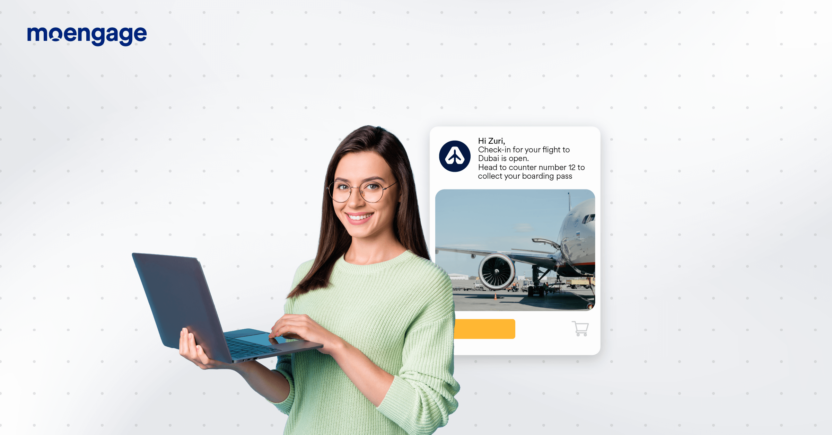
As revenge travel transforms into a resurgence globally, the Middle East and African region have become the torchbearers for this by leading from the front.
There is a 83% and 65% rise in international travel in the Middle East and Africa, respectively, outperforming the Americas, Europe, and Asia-Pacific – United Nations World Toursim Organization
So it becomes of utmost importance for various Airlines operating in and out of the Middle East and African region to see how they can better the customer experience (CX) for each of their passenger.
The advantages of providing a superior customer experience are:
Customer Loyalty: Providing a positive customer experience (CX) is one of the most crucial factors in building a loyal customer base. Airlines that provide exceptional experiences are more likely to see repeat business from satisfied customers.
Brand Reputation: A positive customer experience (CX) can help build a brand’s reputation. Word-of-mouth recommendations from satisfied customers can be a powerful marketing tool, leading to higher brand recognition and customer trust.
Revenue Growth: By providing a better customer experience (CX), the Airline industry can increase customer satisfaction and retention rates, leading to increased revenue over time. Additionally, happy customers are more likely to purchase additional services or upgrade their seats, further contributing to revenue growth.
Operational Efficiency: Providing a positive customer experience (CX) also has operational benefits, such as reduced customer service complaints, decreased customer service wait times, and fewer disruptions or delays due to customer complaints.
Enhancing Insights-led Experience: 7 Customer Touchpoints to Drive Ultimate Experience by Airlines
While it is well established now that Airline companies will need to look at different customer engagement strategies. Brands can identify different touchpoints of customers and build unique strategies across each of them to enhance the experience.
A critical component for building these strategies would be the already existing customer data present with the brands. The airline industry has been prevalent for a very long time, and it comes as no surprise that they have troves of data at their disposal.
With the help of a customer engagement platform (CEP), brands can convert the existing data into valuable insights and identify customer behavior and preferences.
This way, brands can create insights-led personalized experiences across seven customer touchpoints:
- Registration and First Booking
- Booking Abandonment
- Post-booking/Pre-travel updates
- Upsell/Cross-sell
- Holiday Promotions
- Referrals and Ratings – Loyalty Programs
- Reactivation
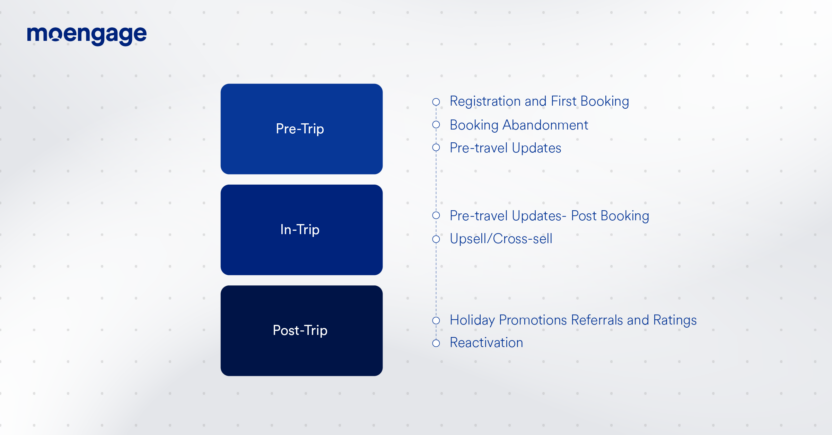
Taking a cue from the above-mentioned example of Farah, let’s look at how Airlines can engage with her across each touchpoint
1. Registration and First Booking
Farah has recently downloaded an airline app or checked out the website to book tickets. However, she dropped off before completing the registration or booking the ticket. In such a scenario, the brand should ideally aim to encourage Farah to complete critical actions and set her on the path to the first AHA moment quickly.
Conversion rate for first time users is between 1-5%.
Strategic Solutions for Brands
- Convert anonymous website and app consumers into registered customers by offering discounts on sign-ups.
- Use AI-based Intelligent Path Optimizer to send them down the best customer journey to maximize first bookings.
- Use actionable funnels and analytics to understand drop-offs and reach/engage them at the moment of drop-offs.
- Use the best customer engagement channel and the best time to engage.
- Use price change alerts to let the customer know of any price changes.
2. Booking Abandonment
Next comes the booking abandonment, where Farah has looked at some flights and selected one. However, she dropped off before completing the transaction. In such a case, the airline brand’s aim should be to drive booking and increase stickiness.
81.6% of all bookings are abandoned.
Strategic Solutions for Brands
- Use a trigger to identify and engage customers who have abandoned the booking process.
- Price change alerts.
- Optimize the purchase path by detecting the moment of booking abandonment.
- Mix channels with journey orchestration to encourage purchase.
- Combine smart-triggered journeys across communication channels like push notifications, emails, web push notifications, and social media retargeting channels.
3. Post-booking/Pre-travel updates
Farah has booked a ticket and has her travel dates coming up in the next couple of days. In this touchpoint, the brands should be focusing on guiding her through the journey for a seamless travel experience. They can ensure this by sending her timely communications around web-check, meal selection and even itinerary changes.
47% of travellers seek clear instructions on any requirements that airlines or accommodations may have.
Strategic Solutions for Brands
- Use customer journey orchestration to guide customers through the pre-journey tasks.
- Identify segments and cohorts of customers yet to complete tasks and engage them.
- Use triggers to keep customers updated on their trip details.
4. Upsell/Cross-sell
Once Farah has completed her purchase, airlines can send her communications about available upgrades in terms of seats or tiers. The aim here is to encourage Farah to upgrade to a higher tier ticket or purchase add-ons
Upselling can increase revenues between 10 and 30% and is considered 68% more affordable than acquiring a new customer.
Strategic Solutions for Brands
- Segment customers by journey and provide relevant offers and discounts for additional services like seat upgrade, early check in, or in flight experience.
- Offer discounts for flight upgrades, in-journey upsells
- Use triggered campaigns to upsell at specific time of the journey. E.g., send a push to book airport cab 5 minutes after landing time.
5. Holiday Promotions
Farah has become a regular customer of an airline brand. Now, it becomes imperative for that brand to attract Farah, especially during the Holiday/Festive season, like summer vacations. Airline brands can leverage insights to drive personalized recommendations to ensure Farah remains engaged.
Holidays continue to be the busiest and best season for travel. Thanksgiving weekend 2022, was the busiest travel day for passenger traffic since the start of the pandemic.
Strategic Solutions for Brands
- Create segments of customers who are likely to travel, and who have travelled during specific holidays in the past. Engage them early to book tickets before the cost goes up.
- Orchestrate multi-channel journeys on preferred channels for new holiday season sign-ups and app customers who have a high propensity to travel.
6. Referrals and Ratings – Loyalty Programs
Farah has become a power user of one of the airline brands due to the amazing personalized services she has received in the past. In this scenario, the airline brand should nudge Farah to share her customer feedback on the recent airline customer experience and, at the same time, send communication, asking her to refer to avail benefits.
10% of those who used an OTA to book travel said they chose it because of a friend’s recommendation.
Strategic Solutions for Brands
- Nudge regular travelers to share the app with friends and family to get flat discounts.
- Incentivize travelers to share customer feedback at the right time after their journey completion.
7. Reactivation
Farah has not been actively coming to the airline’s app or website as frequently as she used to. In such a scenario, the airline brand should look to win back Farah with relevant offers and customer engagement strategies.
Strategic Solutions for Brands
- Proactively identify churning or inactive customers and nudge them to get back.
- Keeping dormant customers informed of deals and personalized offers to drive bookings.
- Nudge churned customers with welcome-back offers and provide special discounts.
How Does a CEP Help Airlines Across the 7 Stages
A CEP helps Airline brands by implementing segmentation correctly and consequently reaching out to their prospective customers through the right channels. A powerful platform like that can help brands turn a one-off flyer into a regular, paying customer!
With a CEP like MoEngage, Airlines can:
- Boost engagement with behavior-based messaging
- Re-target customers who have dropped off and bring them back to the app or website
- Create customized journeys that enrich the customer experience
- Drive conversions and boost revenues
Personalization from the Get-Go
Using MoEngage’s CEP Airline brands can create contextual and tailored website experiences, a great way to create memorable experiences according to the customer’s preferences and behavior.
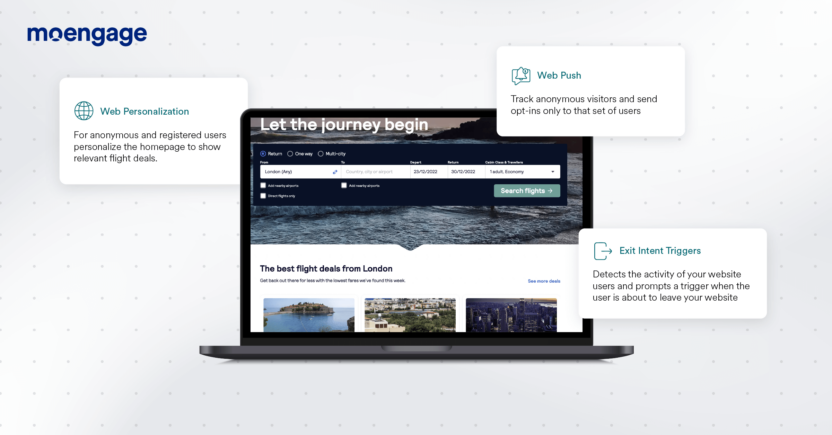
Using the website personalization capabilities of MoEngage, brands can create personalized web experiences by tapping into the power of AI automation and actionable insights.
In fact, personalized website experiences are responsible for a 28% boost in marketing campaigns’ efficiency.

Funnel Analysis to Understand Customer Journey
Using Funnel Analysis, Airlines can understand what part of the journey they are dropping off on. Understand if drop-off happens at sign-up or during booking. Use different messages for each segment to encourage completion of the booking.
Another way brands can leverage funnel analysis is to understand where a loyal customer is dropping off. This way the can identify pain points and offer quick action.
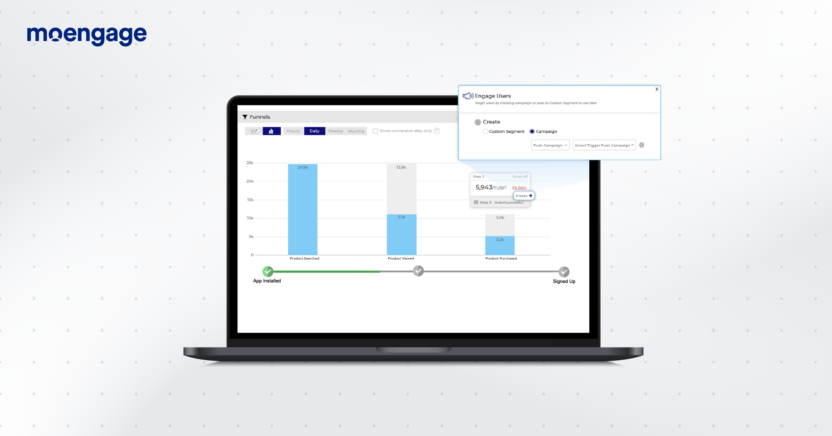
Omnichannel Communication Approach to Prompt Action
Regardless of the stage, Airlines can leverage a CEP like MoEngage to use various digital channels like Email, SMS, Push Notifications, In-app, WhatsApp, and others to communicate with customers in an interactive manner, on a timely basis, and through their preferred channel.
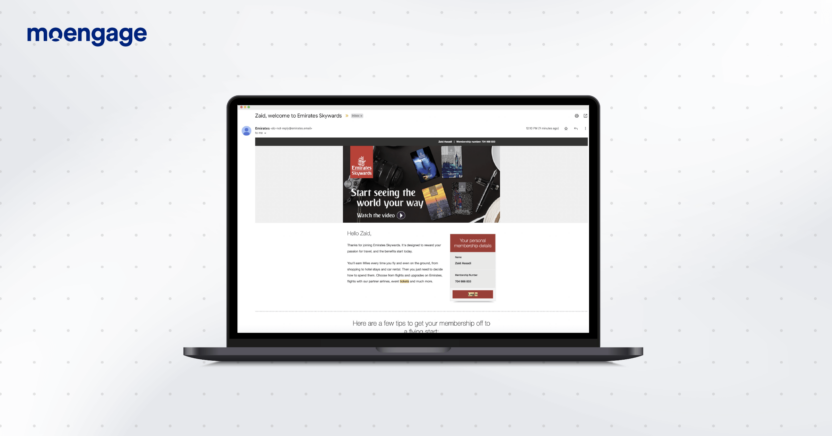
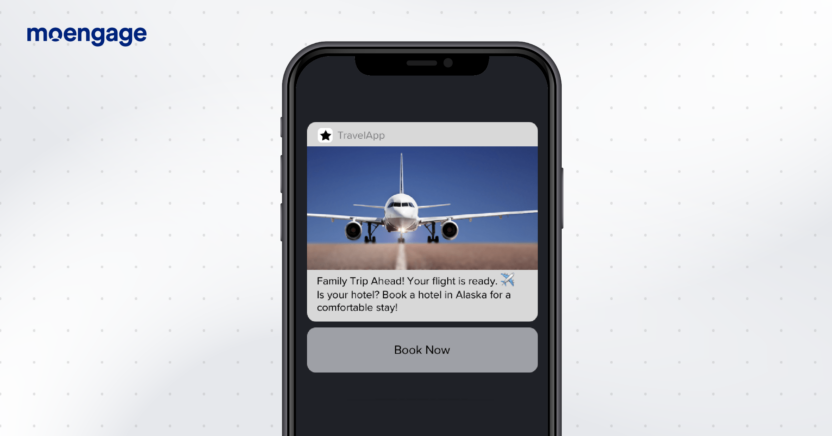
AI to Maximize Conversions
Use Sherpa AI, powered by MoEngage, brands can identify how customers are interacting with them. MoEngage’s Sherpa is an AI engine that can help Airline brands use AI to deepen customer engagement. Using Machine Learning, Sherpa determines which content is performing best in multivariate testing, then uses that content in the marketing campaigns.
In addition, Sherpa can make sure messages are sent to consumers on an individual basis, at the time they are most likely to open and engage with that content across different channels like email, SMS, push notifications, app, and site.
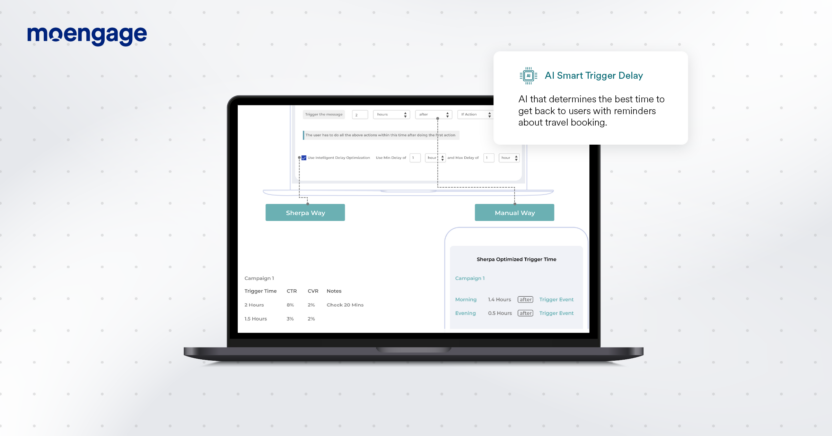
How Jazeera Airways Increased its Website and App Conversions
Use INFORM: The Next-Gen Messaging Infrastructure for Transactional Alerts
With Inform, brands can use single API to build and manage transactional alerts across channels. Using MoEngage Inform, brands can deliver critical messages to customers in real-time. These include alerting customers when a flight is delayed/cancelled, sending OTPs for approving transactions or logging in securely, cab arrival updates, or password reset requests.

RFM Modelling to Segment Customers
MoEngage’s RFM (Recency, Frequency, and Monetary) Model provides auto-segmentation and bucket customers into categories such as Loyal, Promising, At Risk, etc. based on their behavior. These auto segments can be used in different ways such as customer analysis, churn analysis, and campaign effectiveness.
RFM Analysis can be used to answer questions like:
- Who are your loyal customers?
- Which are the customers who are most likely to churn?
- Which customer is purchasing the most on your platform?
- Which customers journey can be improved?
- Which customers are most likely to engage with your campaigns?
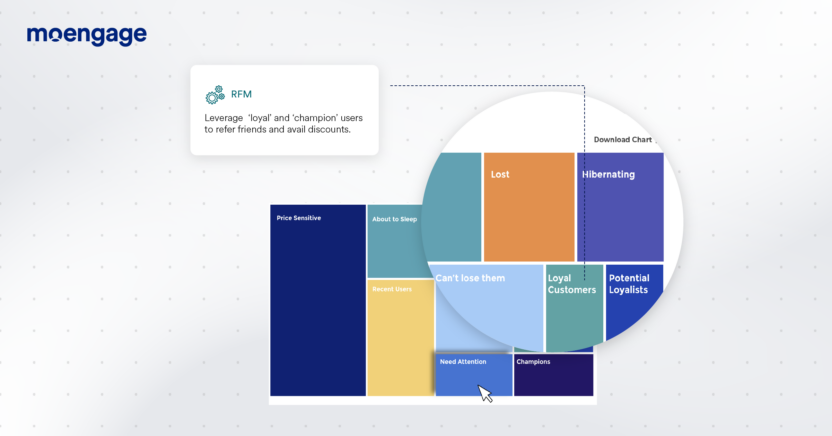
Using ‘Flows’ to Automate Personalized Messages
Using MoEngage Flows, brands can design marketing automation flows and deploy them across channels. For example: from onboarding a new prospect to earning referrals from existing customers, Flows takes care of all customer touchpoints.
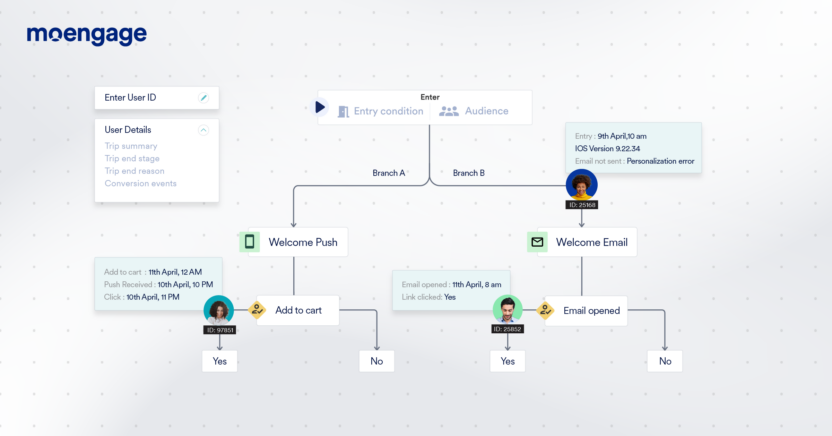
Conclusion
With a pent-up surge in travel, customers have developed a sharp eye for benefits and expect more from their preferred travel brands. To account for the the small booking window, brands need to reconsider their strategies and replace them with customer-first strategies that prioritize relevant messages, on the right channel, at the right time.
Ultimately, creating a long-lasting relationship with existing customers will be the core for increasing customer lifetime value.
Brands can learn more about how Airlines like Emirates and Ethiopian Airlines are creating great customer experiences in this ebook.
Further Readings
- The Digital Engagement Map to Successfully Navigate the Travel and Hospitality Landscape in 2023
- Omnichannel Marketing Examples – Implemented by 10 Amazing Brands
- Mythbusters: What Is a Customer Data Platform and How It Works with a CEP
- A Day in the Life of our Implementation Manager
- Is Your CRM Enough to Keep Your Customers Buying from You?









